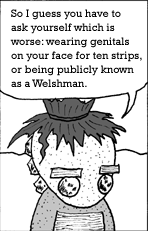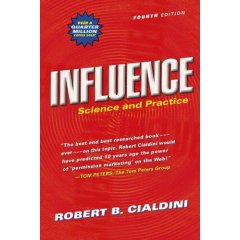Recently, Kit wrote about carbon offsetting, calling it wishful thinking at
best – at worst, greenwash. In particular, he was looking at tree planting as a method of offsetting carbon emissions, because it’s
the most popular method by far. Just this morning I passed a truck making deliveries to a shop around the corner from me, proudly proclaiming in letters on the back that were almost as
big as the company name, "We are a carbon neutral company."
This got me thinking about the mathematics of carbon neutrality. As I understood it, every year your company assesses it’s CO2 production, estimating how much carbon it’s
flinging into the atmosphere, and pays another company to plant trees that will "offset" the carbon emitted by absorbing the gas in that way that plants do – through photosynthesis. I
found myself wondering how long this process takes – for instance, if I produced X tonnes of CO2 last year, so I need to buy Y trees to counteract
that… how long will it take those Y trees to absorb X tonnes of CO2. The missing variable, T, doesn’t seem to be widely publicised – and there’s a
huge difference between this year’s emissions being absorbed in one year than being absorbed in 40 years.
It turns out, thanks to some research this morning, that this is actually accounted for. T is one year: therefore, in theory at least, your purchase of a certain number
of trees will offset the production of – for example – the carbon emissions of a particular motor vehicle for the rest of it’s lifespan. It’s a very wooly theory, of course – the
vehicle will become less efficient with age, for instance; some species of trees do not produce a net reduction in their local CO2 levels for the first eight years of their
lives; maintaining a sustainable forest makes significantly less impact on CO2 than planting new forests; and as forests reach maturity (30-60 years, depending on the
species) they become less efficient at impacting CO2 again. There are lots of factors that aren’t taken into account, but at least my "missing variable" is.
It turns out that factoring in time isn’t a problem, because tree planting is really quite cheap. A hundred pounds or so shelled out when buying a new petrol-driven car (that’ll see
pretty average use) pays for enough trees to be planted that – assuming that they are left alone during the entire working lifespan of the car and are not cut down or (worse yet) burned
– the carbon emissions of that car are "neutralised." Good for you. You can feel a happy feeling about yourself.
As an optional aside:
I’m somewhat reminded of the Catholic Church’s practice of indulgences. It is the belief of Catholics that sins
must be confessed to be forgiven, but that because humans are such naughty, sinful creatures, it’s pretty likely that they’ll have unabsolved sins at the time of their death. Mortal
sins (the really serious kind) and concious rejection of God have you sent straight to Hell, but if you’ve merely got a few venial sins (the not-quite-so-serious kind) under your belt
when you die, you’ll have to go to a place called Purgatory where you’ll be punished… er… I mean cleansed… of your remaining sins so that you’re pure when you finally get to
enter Heaven. Catholocism also teaches that the time that you (or somebody else – even somebody already dead) need to spend in Purgatory can be reduced (let’s call it "offsetting")
through penitential acts: usually prayer, but in the past, deliberately bringing punishment on oneself was perhaps almost as popular (fasting, wearing uncomfortable clothing, etc.).
Prior to 1567, if you’d committed a sin – and you had the money – you could even buy your way out of it, purchasing an indulgence from your priest that offset, for example,
several hundred days worth of penitential prayer without ever getting down on your knees or picking up a rosary. Some divisions of the Catholic Church still approve of giving money to
charity as an act of penance, but "buying your way out of penance" by giving to God is now seen as wrong (I wonder how many "sinners" asked for their money back after being told that
their indulgences, purchased before 1567, were no longer valid?).
That diversion aside: my research isn’t all fun and games, though. While initial evidence seems to indicate that carbon offsetting through tree planting genuinely can, done
right, theoretically, kind-of reduce atmospheric CO2 by an equivilent volume to that output by the sinner… er, I mean, offender (wow; it’s easy to accidently take a metaphor
too far, isn’t it), the bigger question for many people is: what about global warming?
And that’s where it all falls down. All the studies seem to indicate that while tropical forests (you know, like the ones in Brazil that we just keep felling) cause a global cooling
effect, forests in temperate areas have no net effect on global temperatures. It turns out that despite them removing carbon compounds from the air, they also provide a dark and (of
course) light-absorbing surface which actually helps to trap heat close to the planet’s surface. Worse yet, evergreen trees (of the kind that are so popular in European tree farms) and
plantations in cold areas have an even worse effect, absorbing the sun’s heat that would otherwise be reflected – at least some of the year – by snow.
We’re going to have to see a lot more long-term studies on carbon offsetting before we get a consensus on what it’s actually doing for us as a species, but it should be evident that it
certainly doesn’t do everything it claims to do, or at least that it isn’t so clear-cut as it could be. As a way to make yourself feel less guilty for polluting the atmosphere, though,
it certainly works a treat, and modern carbon offset companies help to make it a lot less effort than repeated Hail Marys or reducing emissions in the first place.
If that’s all a bit serious for my blog, take a look at CheatNeutral. CheatNeutral apply the carbon offset model to relationships – if you’ve
cheated on your partner, pay CheatNeutral £2.50 and they’ll give you a certificate with which to apologise to your partner. They promise to invest your money in helping to ensure that
other people don’t cheat on their partner – either by keeping them single or by keeping them faithful, so you can relieve the guilt of cheating by knowing that you’re helping
to ensure that other people don’t get cheated on too.
 On
On 
